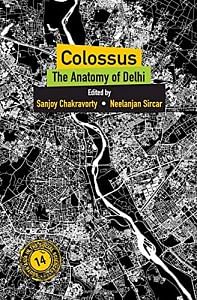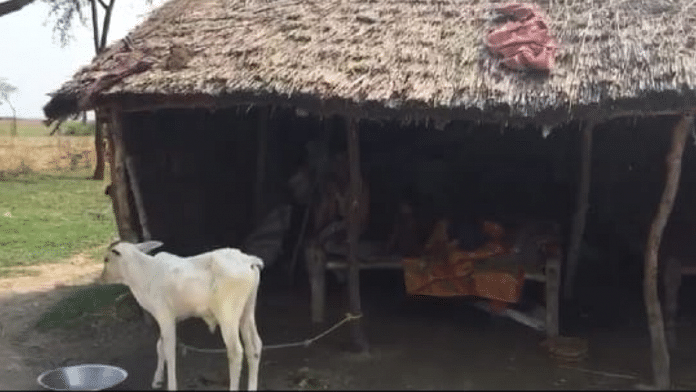India is now the fastest urbanizing country in the world, and such urbanization is typically associated with opportunities for greater income, education, and social mobility. But the city is far from a monolithic whole; it encompasses makeshift slums to wealthy gated neighbourhoods and everything in between. It is becoming increasingly clear that simply “growing up in a city” has little meaning—where you grow up in the city matters a lot for a bevy of social and economic outcomes. At the same time, global capital is engendering unprecedented inequalities in economic well-being, and rising land prices in many cities are pushing disadvantaged populations to the fringes of urban areas.
If the disadvantaged are systematically pushed to the urban periphery, they are likely to be “peripheral” to the social gains from urban growth, a phenomenon that has already been observed in many Western cities and urban agglomerations. Under these circumstances, disadvantaged populations benefit little from investment in the urban core and remain segregated from wealthier residents and their tools of wealth generation; there is a genuine fear that urbanization does little for the social mobility of the disadvantaged in such a scenario. The National Capital Region (NCR) has seen soaring land prices and incomes since the 1990s along with very high rates of in-migration, exactly the conditions under which one might expect increasing peripheralization of disadvantaged populations. For these reasons, understanding the spatial distribution of marginalized caste/religious groups and economic well-being at the scale of the entire NCR is of critical importance.
There are, however, good reasons to believe that the described model of “spatial inequality” and peripheralization in the previous paragraph does not translate well to the NCR or many urban contexts in the Global South. Classic models of urban spatial inequality have largely been developed in the West and are typically imbued with a very particular understanding of racial and immigrant relations. The experience of India’s marginalized urban communities, namely Scheduled Castes (SCs) and Muslims, (while deeply problematic) cannot be easily compared to the black experience in America or the immigrant experience in Europe. Furthermore, much of the Western urban experience is drawn from contexts with a largely formal labour market, with workers that had explicit contractual relationships with factories, a far cry from the present Indian context where more than 90 per cent of the labour force is in the informal sector. Indeed, a great many scholars have noticed that cities of the Global South “look different” from their Western counterparts—often with permanent, wealthy colonies located adjacent to makeshift, poorer colonies—but much of this literature is focused on the aesthetic quality of cities.
Also Read:Delhi Ridge: How it went from a colonial forest to murder scene to morning-walk garden
Spatial Organization of Caste and Religion in the National Capital Region
To grapple with the role of identity in the spatial organisation of any Indian city/urban agglomeration, one should begin by contrasting Indian urban space with the Indian village. Indian villages are traditionally divided into caste-specific neighbourhoods (often referred to as a tola or para). When a particular caste group (jati) is sufficiently numerous, this form of spatial clustering leads to a neighbourhood being perfectly identified with the caste group. For instance, local villagers will simply use the name Yadav Tola to denote the neighbourhood inhabited by the Yadav caste. Even when a caste group is not sufficiently numerous, it will typically locate in a neighbourhood with other caste groups of similar social status. Thus, in Indian villages, the basis for spatial location is explicitly caste (and sometimes religious) identity. Settlement patterns in Indian cities, and thus urban space, are quite different. To be sure, history, status hierarchies, and caste networks may lead to significant identity-based clustering in cities, but identity need not be the explicit basis for spatial location in most urban areas. For instance, the Delhi neighbourhood of Malviya Nagar is not explicitly intended to be dedicated to a single caste or religious group, even if particular groups might be more numerous. More to the point, whatever Malviya Nagar’s demographic composition may have been when it was founded in the 1950s (by refugees from Pakistan), its population has changed significantly as Delhi has continued to grow.
How do the identities of caste and religion manifest themselves in the city and structure spatial location? In a recent study on the spatial location of Muslims in Delhi, Gayer argues that Delhi’s Muslim community often practices “self-segregation” for greater security under the threat of communal (religious) violence. The author quotes a journalist who sums up the principle succinctly:
My brother … lived in a Hindu mohalla. Madan Lal Khurana, who would later become Chief Minister of Delhi, led Hindu mobs which threatened Zakir Bagh. My brother and his family decided to move to Noop Nagar [a Muslim-dominated locality of Jamia Nagar]… Now, nobody feels threatened any longer.
While caste discrimination is still practised in urban areas, there is significantly less threat of such large-scale urban violence along caste lines. The reasons for this disjuncture between religious and caste violence are not easy to discern. It may, however, be stated, as a matter of fact, that anti-Muslim violence has been a common tool for urban political mobilization, particularly in north India, whereas the same cannot be said of anti-SC violence (this is not to deny the scale of anti-Dalit violence in India or previous caste riots across India). Thus, while SC neighbourhoods in bastis (slums) are still prevalent, one does not expect the same level of ghettoization of the SC population as for the Muslim population due to this form of violence in a place like the NCR.
And yet while Muslim ghettos are prominent in many Indian cities, such ghettos often neither constitute the “inner city” or the “periphery” as they do in so many American cities—indeed many Muslim ghettos are located very close to wealthy, Hindu areas, and studies of caste/religious segregation in India have not found the level of segregation faced by the black community in America. As Frey describes, the spatial separation between blacks and whites was aided in large part by discriminatory institutions and housing policies in the suburbs. If, in urban India, groups that display animosity toward each other, and have very different economic profiles, continue to live in close proximity to each other, it is important to understand the social processes that lead to such a spatial organization of the population.
Also Read: How we breathe the cleanest air in one of Delhi’s most polluted office areas
Socioeconomic Sorting and Heterogeneity
The underlying assumption in the Chicago School framework, as discussed earlier, is the power of real estate and land prices to structure residences in the city. Space and distance play a role in spatial location for residents insofar as it structures the physical and opportunity costs of travel to work. This means the poor are often willing to move to a cheaper, more peripheral location if the increased costs related to travel are not too onerous. The phenomenon of “pricing out” the poor is a remarkably efficient way of creating a core-periphery settlement pattern.
But unlike the context studied by the Chicago School, and other theorists of urban space in the West, the relationship between citizens, labour, and services in India is largely in the informal sector. This means that bonds between employer and employee are often shaped by trust and regular interaction, rather than a formal contractual relationship. To the extent that these bonds of trust and interaction are shaped by physical distance, the spatially proximate location of rich and poor, employer and employee, can be sustained and population sorting purely based on land prices can be mitigated.
A simple example will help clarify the principle. Until recently, if one wished to return home late at night from many of Delhi’s wealthy “colonies,” he or she would have to rely on the local taxi stand. These taxi stands were located near the colony and could be trusted to regularly ferry people in and out of the colony safely at all hours of the day. As “aggregator services” such as Uber and Ola have gained in popularity, taxi drivers have shifted to driving for these services and taxi stands are disappearing around Delhi. The aggregator services match a potential passenger with a driver based on a contractual relationship operating on mobile phones and backed by the code of conduct of the company (although safety concerns persist). The co-location (or previous interaction) of driver and passenger is no longer needed as it was before. While the taxi industry may be changing, informal bonds of trust are still largely required for domestic help, house repairs, and many commercial transactions, from those who live nearby. Many important interactions between citizens in the NCR are based on these informal bonds of trust, from whom to invite for dinner in the home to whom to approach to solve a neighbourhood-level grievance. Much of this volume is dedicated to empirically characterizing these trust-based interactions.

This excerpt from the chapter ‘Assets and Spatial Inequality’ by Neelanjan Sircar from the book ‘Colossus: The Anatomy of Delhi’ edited by Sanjoy Chakravorty has been published with permission from Cambridge University Press.



